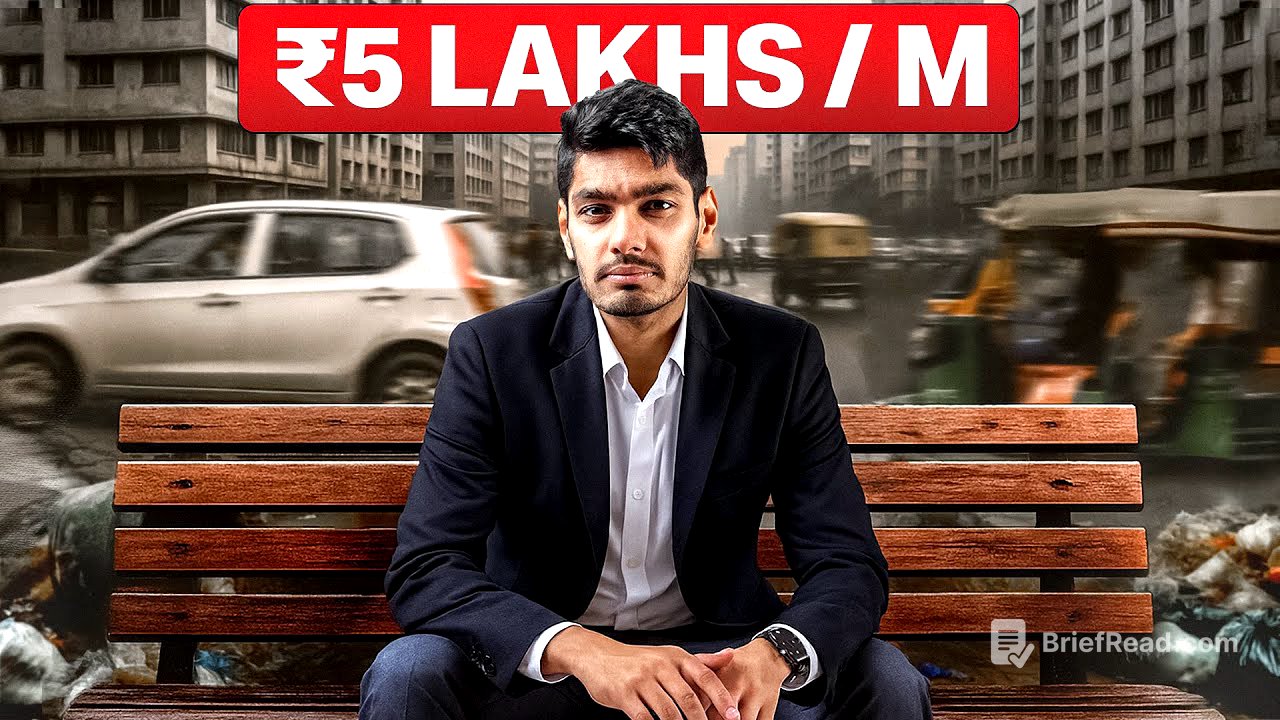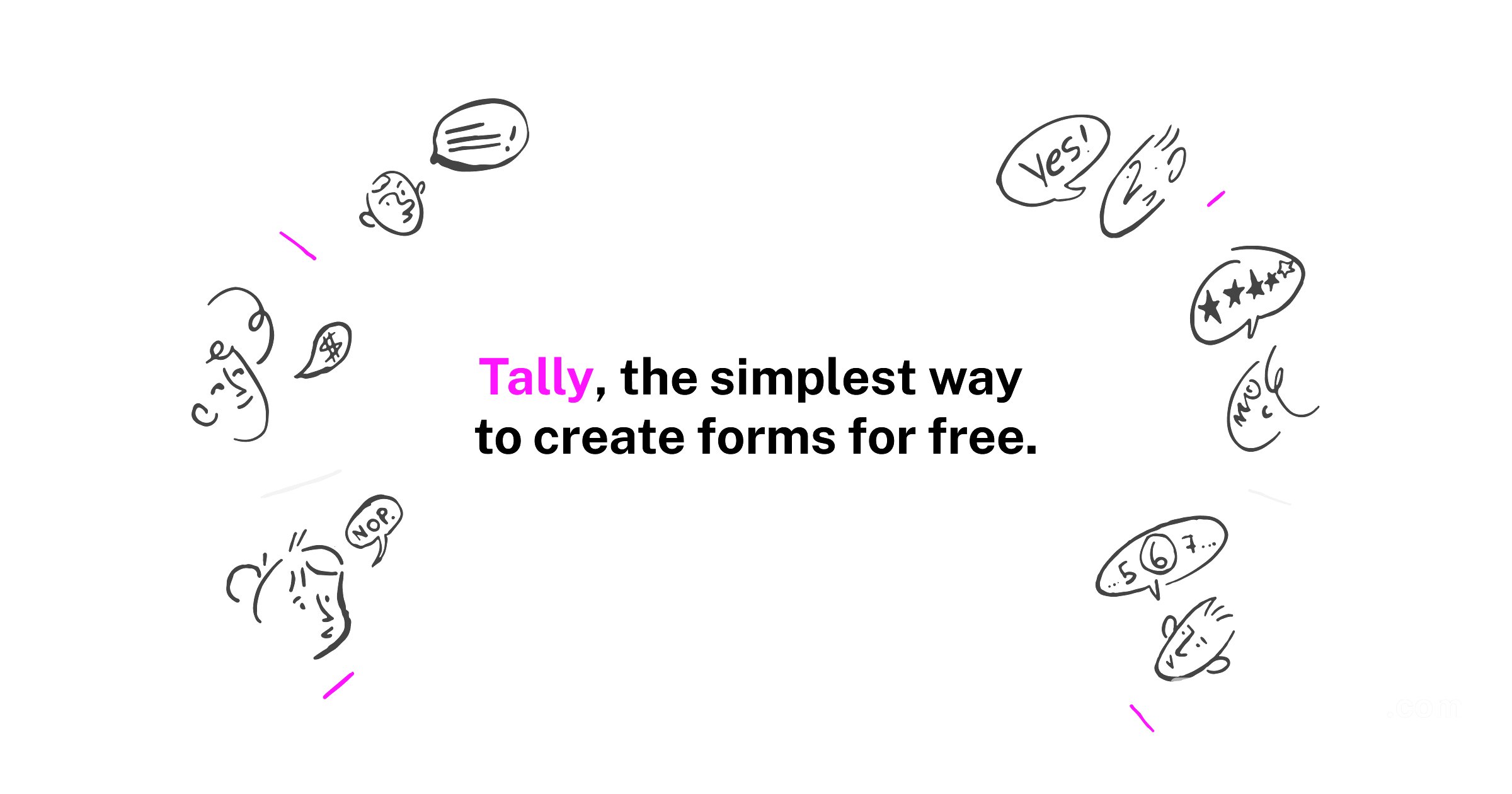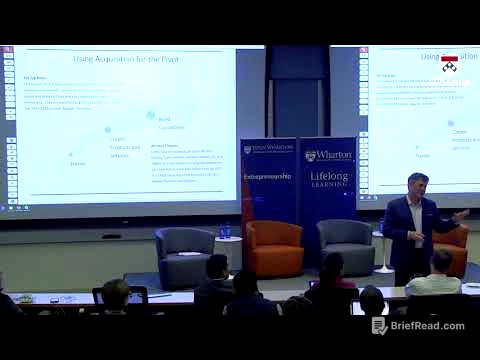TLDR;
The video talks about the stark contrast between India's economic growth and the actual quality of life in its cities. It divides India into three tiers: Tier 1 (developed, private sector-driven), Tier 2 (government and private sector collaboration), and Tier 3 (government monopoly). The video highlights the problems in Tier 2 and Tier 3, such as poor infrastructure, lack of cleanliness, and inefficient governance, and how these issues affect the daily lives of urban professionals. It also touches upon the lack of political will to improve urban infrastructure and suggests that awareness and pressure on politicians are needed to bring about change. The video also mentions a scholarship opportunity for students interested in CS&AI at Scalar School of Technology.
- India's economic growth doesn't always translate to better quality of life, especially in cities.
- The country is divided into three tiers with varying levels of development and governance.
- Urban infrastructure is lacking due to inefficient governance and lack of political will.
Introduction: India's Growth Story and the Reality [0:00]
The video starts by acknowledging India's position as the fourth-largest economy, highlighting advancements like Vande Bharat trains and digital payments. However, it quickly contrasts this with the everyday realities of life in India, where despite economic progress, people still face issues like flooded roads, traffic, and pollution. Even those who can afford luxuries end up paying high taxes and navigating poor infrastructure. The presenter introduces the concept of dividing India into three tiers to better understand these disparities, inspired by Joydeep Singh Sharma's tweet.
Understanding India's Three Tiers [0:57]
The presenter explains the three-tier system in detail. Tier 1 represents the developed parts of India, driven by the private sector, where comfort and convenience are prioritized. Tier 2 involves collaboration between the government and the private sector, covering areas like roads, public transport, and sanitation, which are often haphazard. Tier 3 is where the government has a monopoly, encompassing institutions like the police and courts, which are often plagued by inefficiency and corruption. The video will further illustrate these tiers through the experiences of young professionals in major Indian cities.
Scholarship Opportunity at Scalar School of Technology [1:41]
Before diving deeper, the presenter announces a scholarship opportunity. He will sponsor a student to attend Scalar School of Technology (SST) for a CS&AI program. SST, founded by ex-tech leaders from Meta, Google, and Amazon, focuses on innovation and offers mentorship and startup funding. The presenter emphasizes the innovative work being done by students at SST and encourages interested individuals to register for an exam to potentially receive a 100% scholarship.
Tier 1: The Shining Example of Private Sector Success [3:16]
The video illustrates Tier 1 with examples from cities like Bengaluru and Delhi. In Bengaluru, Aditya enjoys the convenience of ordering coffee from Starbucks, working at WeWork, and using Rapido for commuting. In Delhi, Rimi frequents fancy cafes in Hauz Khas and shops in Khan Market, easily ordering services like pedicures through UrbanClub. The presenter points out that these conveniences, readily available at home, showcase the comfort and ease provided by the private sector in Tier 1 India.
Tier 2: The Haphazard Collaboration Between Government and Private Sector [4:53]
The video transitions to Tier 2, where the government and private sector collaborate on infrastructure and public services. The presenter highlights the irony of Indians being surprised that war-torn countries often have cleaner and better-maintained cities. Examples include the traffic in Bengaluru, the garbage and lack of walkable footpaths in Mumbai, and the flooding in DLF Gurgaon and Kolkata. While private entities in DLF societies maintain good infrastructure, the roads outside these areas remain problematic, affecting daily commutes. The presenter questions the value of economic growth if basic amenities like walkable streets are lacking.
Tier 3: The Government Monopoly and Its Inefficiencies [7:56]
Tier 3 is described as the most problematic, where the government has a monopoly over essential services like the police, courts, and municipalities. The presenter emphasizes the fear associated with interacting with these institutions, citing examples like car thefts, overflowing drains, and potholes. The inefficiency of the legal system is highlighted with a case in Delhi that took 26 years to resolve. The lack of trust in the police and the acceptance of a broken system lead to a disregard for rules and norms, impacting daily life.
The Impact of Neglecting Urban Infrastructure [9:38]
The presenter acknowledges that GDP growth is beneficial but argues that it doesn't fully reflect the quality of life. He points out the lack of political prioritization of urban civic infrastructure, with politicians often dismissing issues like flooding and poor roads. This neglect discourages talented individuals from returning to India, as they seek a better quality of life elsewhere. The presenter suggests that politicians are taking urban voters for granted, focusing on other priorities.
The Root Causes and a Call to Action [11:45]
The video identifies the root causes of the problems in Indian cities as the lack of financial and political power for municipalities, as well as the absence of incentives for maintaining cleanliness and efficiency. The presenter emphasizes the need for awareness and pressure on politicians to prioritize urban infrastructure. He urges viewers to recognize that they, as taxpayers, deserve better services in return. The video concludes by reiterating the scholarship opportunity at SST and encouraging viewers to share the information with interested individuals.









